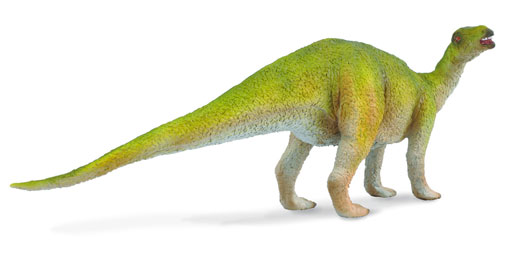Scientists from Argentina announce Discovery of new Dinosaur Fossil Site
A team of scientists from Argentina have announced the discovery of a potentially very important site with dinosaur fossils dating from the Early Cretaceous in the southern Argentine province of Neuquen.
The site is located close to the small town of Las Lajas, which itself is approximately 500 miles south east of Buenos Aires, the capital of Argentina. A deposit in the Bajada Colorada Formation of strata, has been dated to around 130 million years (Barremian faunal stage) and it is hoped that dinosaur fossils excavated from this site will help provide information on the diversification of Dinosauria during the Cretaceous.
Dinosaur Fossils
The rocks at this point relate to the Lower Cretaceous, these are some of the most ancient Cretaceous aged rocks exposed in this region and scientists are confident that new species of dinosaur and other prehistoric animals will be discovered.
Commenting on the find, palaeontologist Rodolfo Coria the head of the Carmen Funes Museum stated:
“The important thing is that we’ve got a deposit in the Bajada Colorada formation, from the Lower Cretaceous period, that is to say, the most ancient that exists”.
Stating that the site had “enormous potential”, the palaeontologist went onto explain that although many different types of dinosaur were known from Argentina, this new location opened up the possibility of retrieving even more fossil evidence relating to the dinosaurs of South America, particularly the ones from the Early Cretaceous.
Possible Iguanodontid
Already the team have discovered fragmentary remains of as yet an unknown Ornithopod (possibly an iguanodontid). The fossilised bones of a hind foot, part of the arm and some vertebrae have been discovered. It is estimated that these bones are part of an animal that would have exceeded six metres in length.
A Model of a Typical Iguanodontid
The image (above) shows a model of the iguanodontid Tenontosaurus from the CollectA range of not-to-scale models.
To view this range: CollectA Age of Dinosaurs Prehistoric Life Model Range.
Professor Coria went on to state:
“We’ve found a lot of fossil material from dinosaurs in that area and up to now we’ve been able to recover part of one of them. We’ve found very informative material and we will examine it in the next few months, during which time we will look for anatomical characteristics that allow us to propose a new species of dinosaur”.
We look forward to hearing about future discoveries from this new dinosaur fossil location.







Leave A Comment